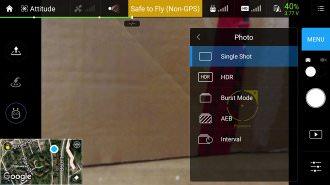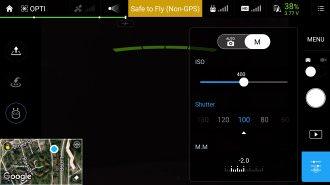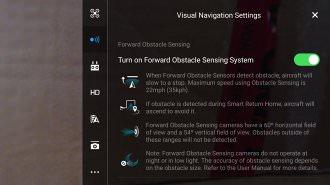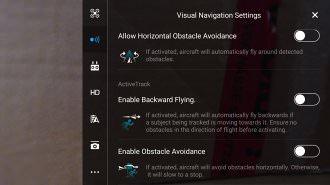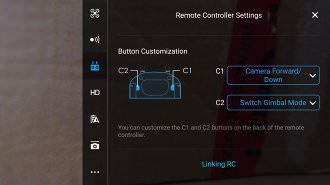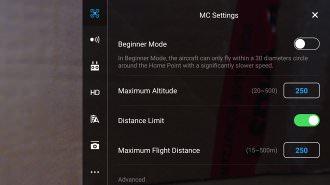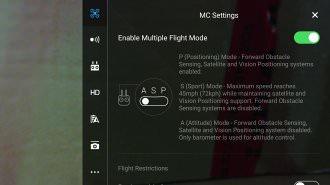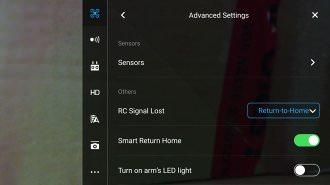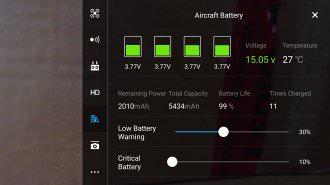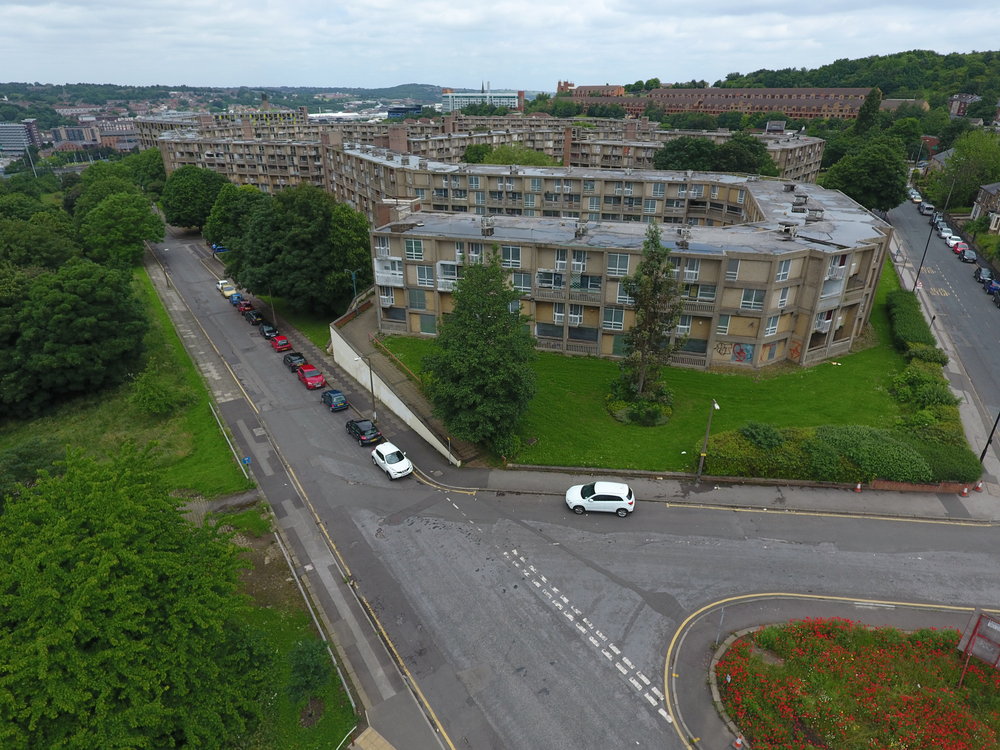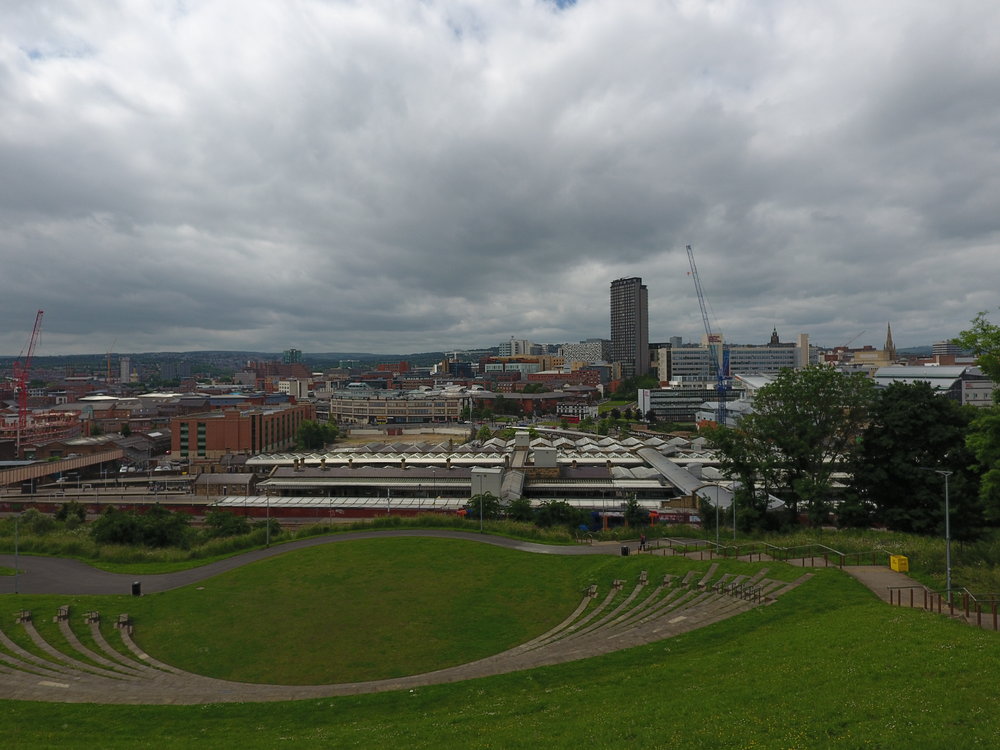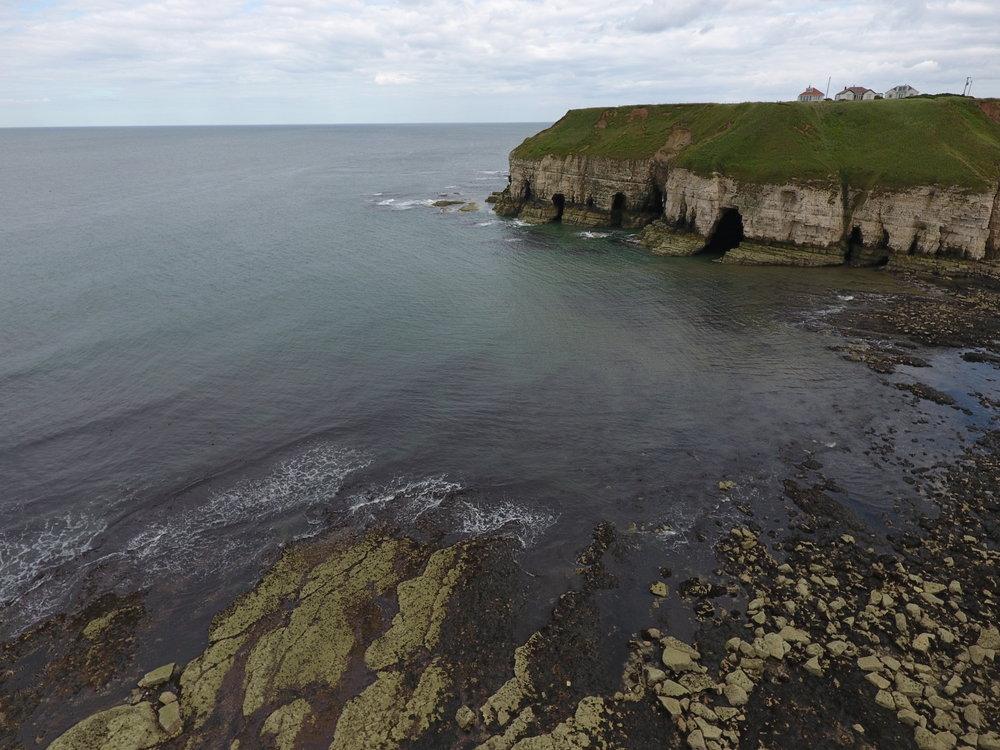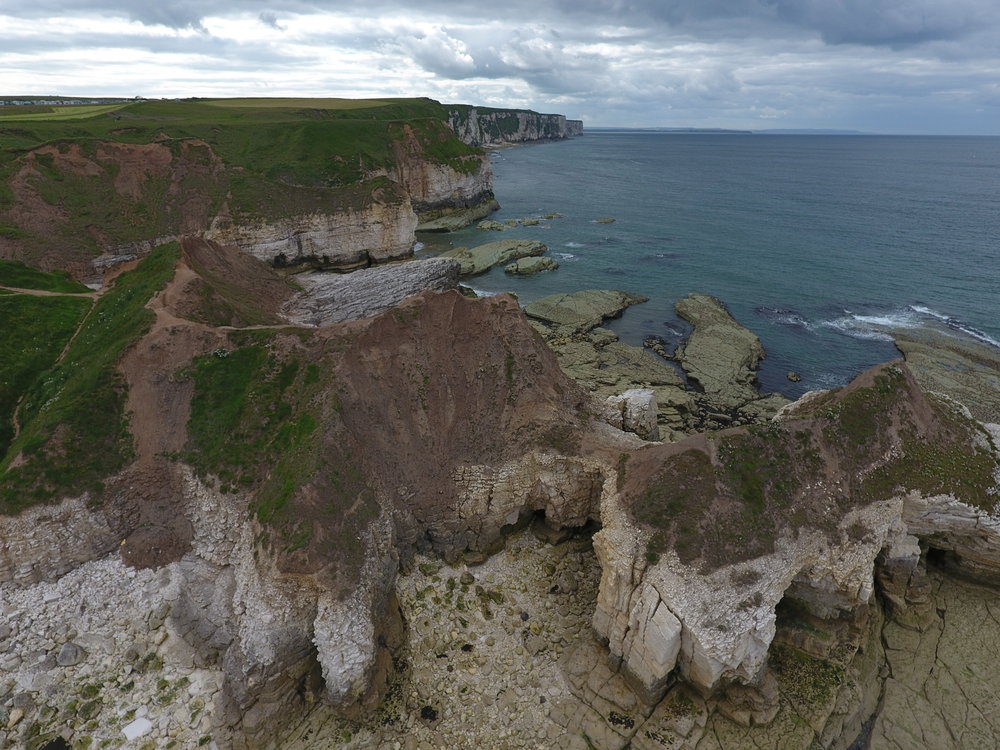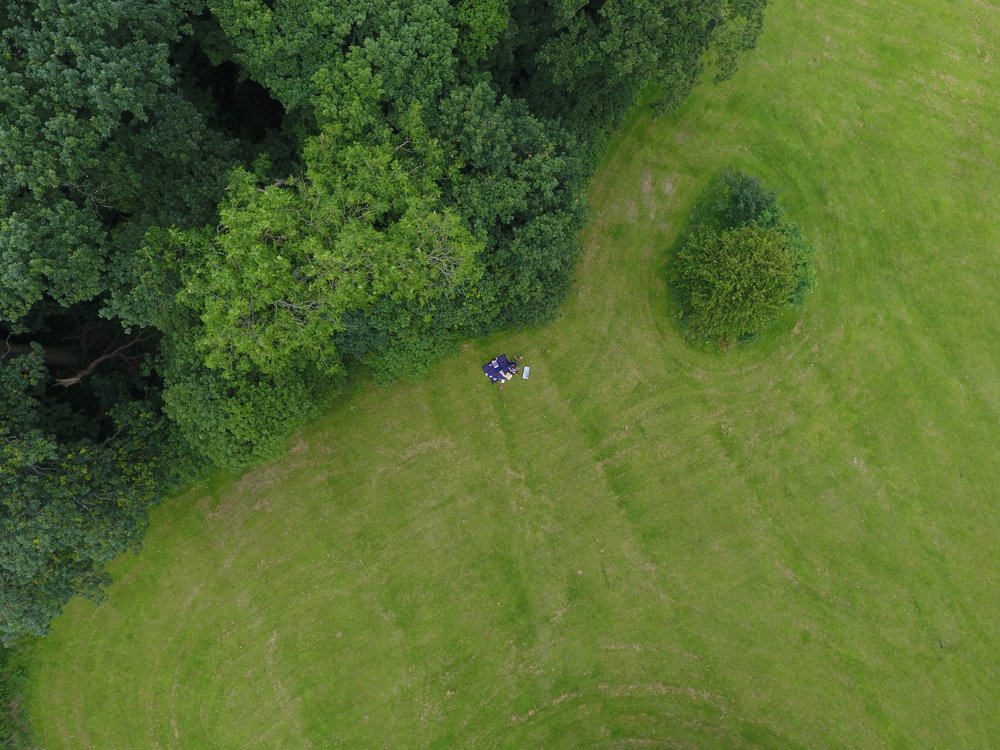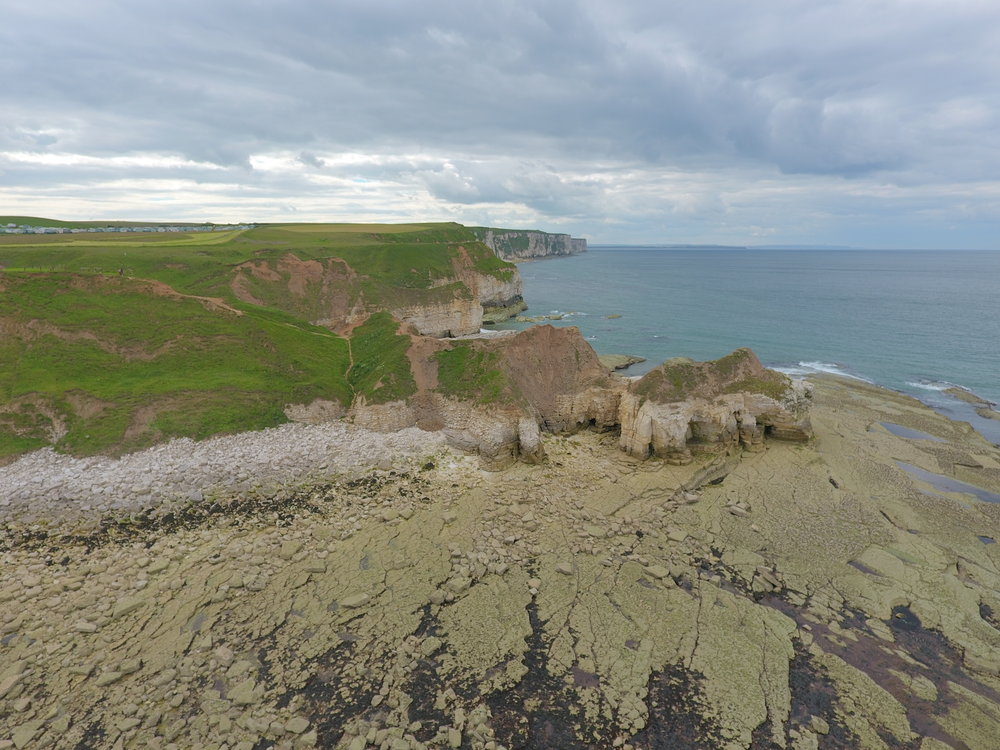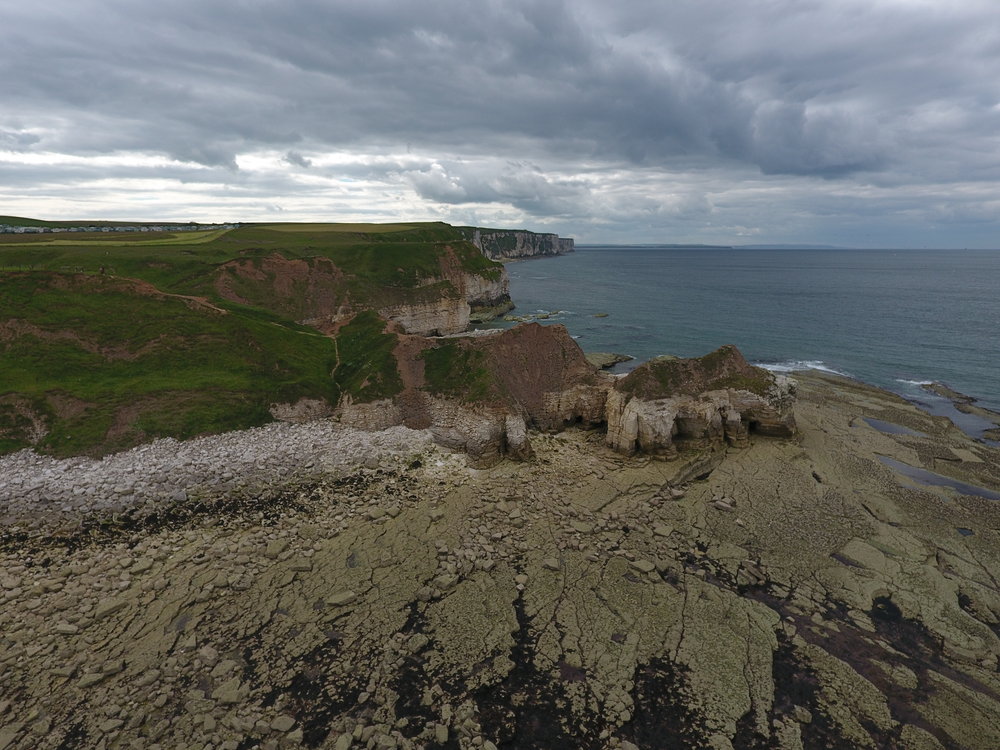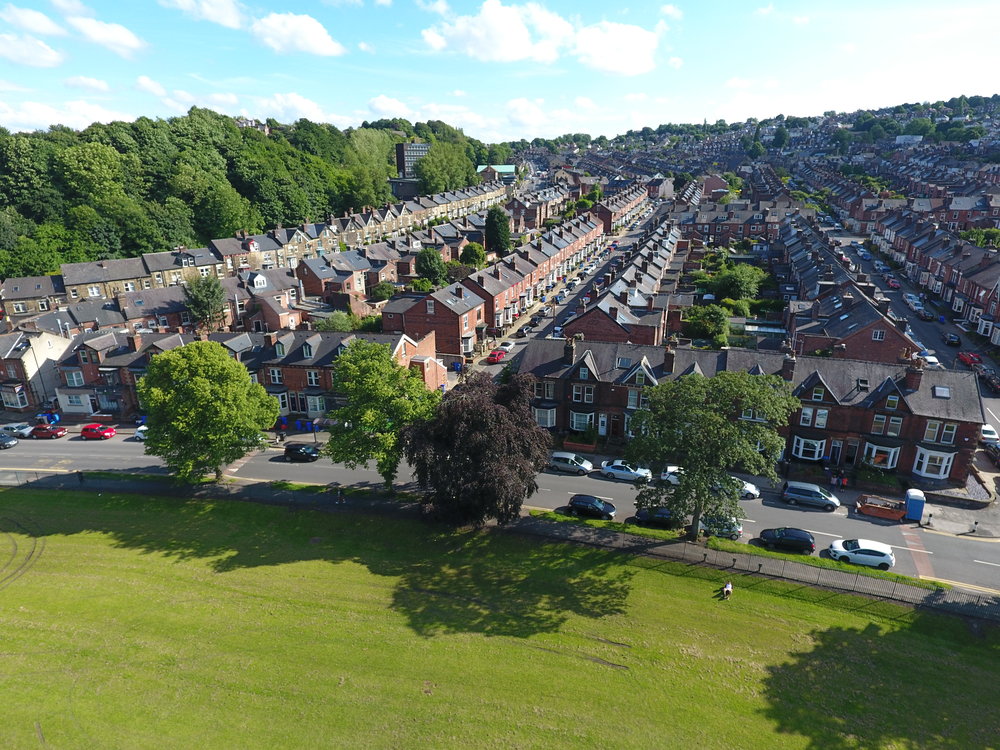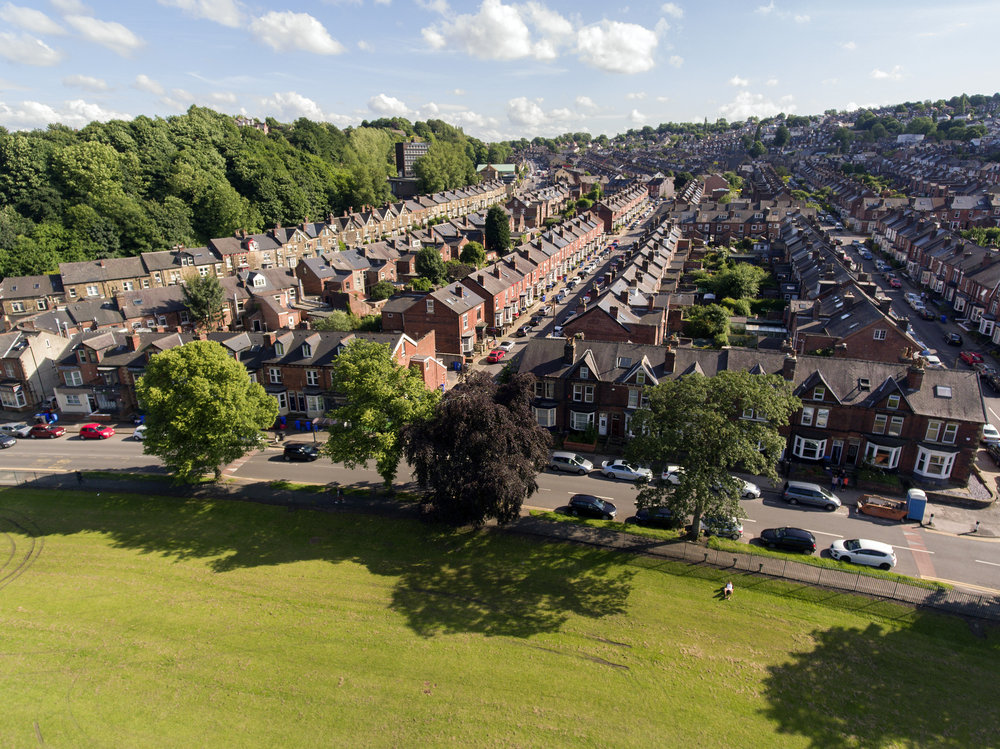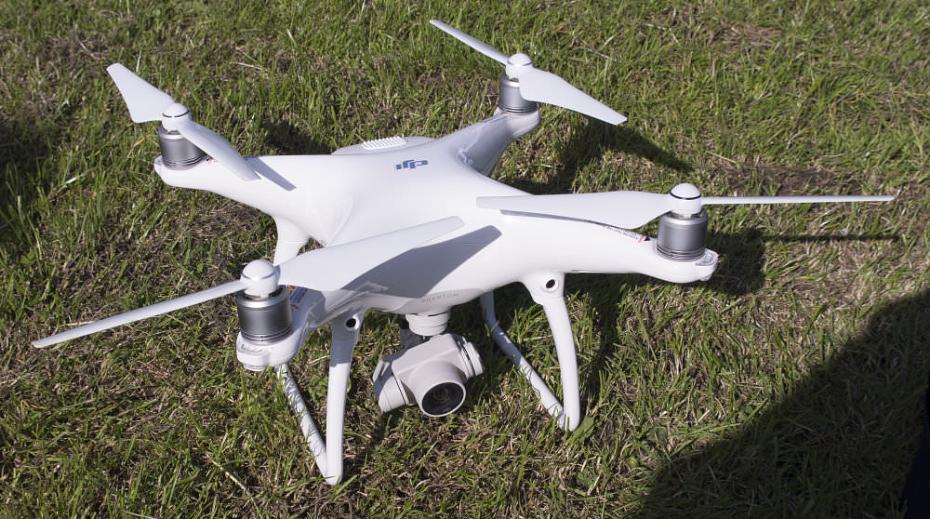
As drones have developed over the last few years, the photographic and video capabilities of the cameras attached to the drone has improved noticeably, which means the latest Phantom 4 from DJI could now be considered a photographic tool that could be used by any photographer. We find out how the new DJI Phantom 4 performs.
DJI Phantom 4 Features
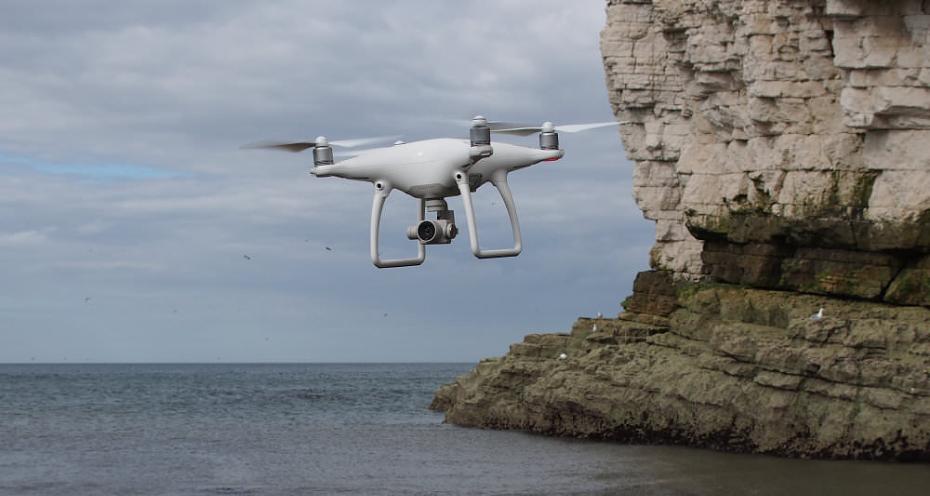
Since the DJI Phantom 3 drone, or quadcopter, the camera has been an integral part of the DJI Phantom drone made by DJI, with a 3-axis gimbal providing the stabilisation needed while the drone is hovering or moving in the air. The 12-megapixel camera on the DJI Phantom 4 offers manual controls, including raw shooting, something you don't generally expect to find on a drone.
DJI Phantom 4 Upgrades compared to the Phantom 3 Professional:
- HDR shooting
- Obstacle sensing system
- Updated Visions Positioning System
- 2 Front-facing cameras
- Improved sonar system for improved vertical hover accuracy
- Reduced chromatic aberration (reduced by 56%)
- Reduced lens distortion (reduced by 36%)
- FullHD video can now be recorded at 120fps
- Increased flying time, up to 28 minutes with longer battery life from the new battery
- Upgraded remote controller
- New sport mode for high-speed flying
- Easier and quicker propeller attachment
- Improved design and gimbal system
The 12-megapixel camera features a wide-angle 20mm equivalent f/2.8 lens with a 94-degree FOV. The camera can shoot at shutter speeds between 8 seconds and 1/8000s. The camera is said to have improved chromatic aberration (reduced by 56%), and lens distortion has been reduced by 36% compared to the Phantom 3 Professional. HDR shooting is new to the Phantom 4.
An Obstacle Sensing System is completely new to the Phantom 4 - and the Vision Positioning System has been updated with additional cameras so that the Phantom 4 can detect objects in front of the drone - great if you worry about crashing the drone. You can enable this with options for the drone to go around or over obstacles or to hover when there is an obstacle.
The Vision Positioning System uses four sensors for improved hovering accuracy, to enable a more controlled flying experience. The sonar system has also been improved, working from up to 10 meters off the ground. These work together to give increased horizontal and vertical hovering accuracy over previous models.
As well as recording full resolution 4K video (CINE and UHD), the Phantom 4 also records FullHD high-speed video, with recording increased to 120fps, compared to 60fps max on the Phantom 3 (Advanced and Professional), although the FOV is reduced to 47 degrees when recording in this mode.
Flying time is increased to 28 minutes, compared to 23 minutes on the P3 Advanced and Professional and 25 minutes on the Standard. The battery is larger at 5350mAh compared to 4480mAh on the Phantom 3 series. The remote controller has also been updated, and has the same power as the Phantom 3 Professional and Advanced, with a powerful 6000mAh battery, compared to the 2600mAh battery in the Phantom 3 (Standard and 4K).
The DJI Phantom 4 drone connects to the remote control using DJI's "Lightbridge Video Downlink" which is said to have a 3.1mile / 5km range (unobstructed, free of interference). This gives the remote controller with an attached device a 720p 30fps video feed so that you can see what the camera on the drone sees.
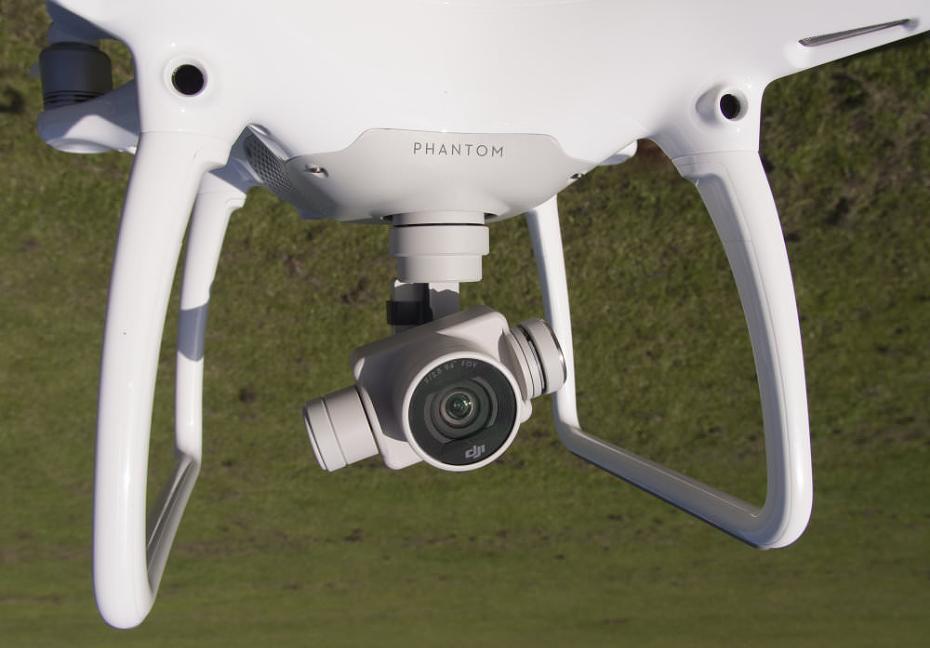
Key Features
- 12-megapixel camera
- 20mm equivalent, f/2.8 lens with 94° FOV
- 3-axis Gimbal Stabilisation (pitch, roll, yaw)
- ISO, Exposure, Resolution control
- ISO speed ISO100 to ISO1600 (Stills), ISO100 - ISO3200 (Video)
- Single, Continuous, AEB, Timelapse, HDR stills shooting
- 4K CINE 25/24fps, UHD 30/25/24fps video recording (60Mbps)
- FullHD 1080p 120fps video recording
- Adobe DNG raw recording
- Long range HD live view
- GPS and GLONASS
- Visual Navigation and positioning
- Automatic object detection and avoidance
- Cinemat Automated Camera Moves and flight paths
- TapFly using your smart device
- ActiveTrack will automatically track a subject using object recognition
- Over 26 minutes of flying time / Up to 28 minutes
- YouTube Live Verified
- MicroSD slot, max 64GB
DJI Phantom 4 Handling

Once the remote controller (RC) and drone battery are both fully charged, and once you've put a MicroSD card in the drone, you can start using it. The power buttons on the RC and drone both need to be pressed once, released and then held for a few seconds in order to power on the devices. This is to prevent them accidentally being switched on. This can be a little confusing to begin with, but once they are switched on they make a re-assuring series of beeps.
When the drone is in its case or being transported, it's advisable to fit the camera securing unit which holds the camera in place so that it doesn't swing around on the Gimbal when in transit.
The drone feels extremely well built, with strong support legs underneath, which feature rubber padding. The drone's blades fit quickly and easily with small instructions on them to show which way round they go, as well as how to lock them into position. Two blades are marked with black circles, and these go on the drone where there are small black dots on the motors. The other two are silver and go where there are no black dots.
There are two customisable buttons on the back of the remote control. You can set what the drone does when the RC (Remote control) signal is lost, with the default being "Return to Home". You can also set whether it will avoid obstacles on the way back to you.
You can update the firmware from your smartphone using the adapter cable accessory that is provided in the box, which means you don't have to connect the drone up to a computer, thus speeding up the process, and ensuring your drone is running the latest firmware.
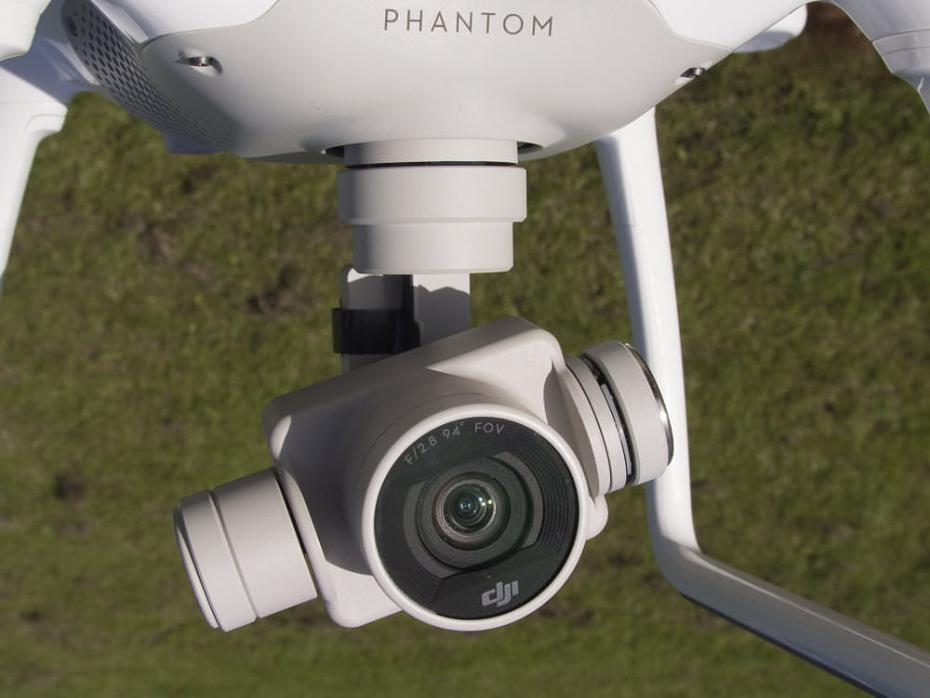
Menus and shooting
There are a number of shooting modes: single, HDR, burst, AEB, and interval. You can adjust the ISO and shutter speed manually, as well as exposure compensation. The aperture value is fixed at f/2.8 and if you're shooting in very bright conditions, then you can add an ND filter to the camera. All settings are adjusted using the DJI GO app on your smartphone or tablet, and the app is available for Android and iOS devices. You can choose between 4:3 or 16:9 aspect ratios.
|
Photo shooting modes |
Manual controls |
When using the app, a copy of the images taken and video recorded will be stored on your smartphone, with a 720p video copy being made. To access the full-size files, including 4K video, you need to access the MicroSD card. This means that you have quick access to photos and videos from your phone, which is great if you want to share them straight away or upload video to YouTube.
Using the touch screen you can set any point of the screen as the exposure area, as well as control whether the camera is pointing down or forwards. You can set it to be horizontal, or pointing straight down, as well as any angle in between.
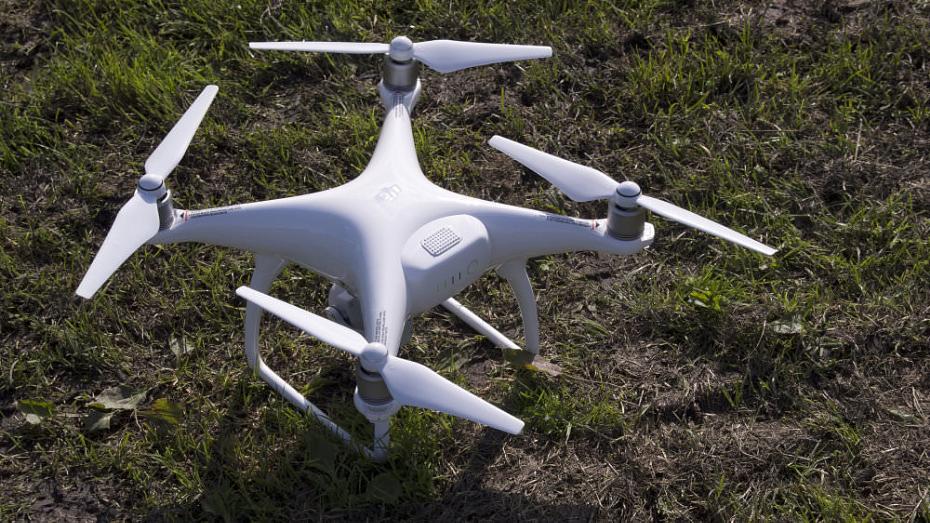
Battery life of the drone is improved over previous versions with between 26 and 28 minutes of flight time available, however this will depend on the wind conditions as well as how you fly the drone, and how much video recording you are doing. The Phantom 4 weighs 1380g with battery and propellers fitted and ready to fly (compared to 1280g for the Phantom 3).
Flying the Drone
Flying the drone is surprisingly easy, you press the takeoff button on your smartphone, and slide a bar across your screen to take off (a safety feature so that you don't accidentally start flying). The drone automatically flies to a distance of 1.2 metres above the ground and simply hovers there waiting for your instructions. In windy conditions, the drone will automatically stabilise itself, and maintain its position without being blown away. You can also switch on beginner mode which limits the flight distance and height to 30m and slows the drone down, this makes it easy enough for even young children to fly the drone (under adult supervision). You can even use the TapFly feature, where you simply tap on the screen and the drone will fly to the subject selected by you.
On screen, you can see what the drone's camera can see, so you can fly to where you need to take pictures or video, and you can adjust the angle of the camera from straight ahead to straight down. Using your smartphone as the control device in conjunction with the remote control sticks / paddles / joysticks is straightforward, however, if your smartphone's screen isn't very easy to see in bright sunlight, then you might need to adjust the brightness controls or think about a sun guard to give better visibility - especially as this is the main control for the drone's camera. Using your smartphone also means your phone is tied up while using the drone, so a small tablet or spare smartphone may be preferable, adding to the expense of the drone.

The DJI GO app provides a wealth of information, including the flying mode, number of GPS signals available, whether the drone is safe to fly, remote signal strength, video signal strength, battery strength, estimated flight time remaining (green bar across top), shooting settings, remaining video / photo storage, sensor height, drone height, vertical / horizontal speed, GPS location (with Google map view), distance to obstacles, plus more controls for shooting.
Particularly impressive is the Vision Position Systems built-in sensors that let you know how far away you are from objects (both in front and below the drone), providing extremely useful information when flying in narrow gaps or spaces. (See this coastal video for an example). The system isn't completely fool-proof, though, and can be switched off for high speed flying (at up to 45mph!), the system also doesn't have any sensors pointing backwards, so it's still possible to fly backwards into an object and crash the drone. The maximum speed has been increased to 20 m/s in Sport mode and the ascent and descent speeds are also increased, and what on the Sport or Attitude modes the drone is very responsive and quick, so care needs to be taken to ensure you don't crash the drone, particularly as you can switch off all the safety sensors.
|
Visual Navigation |
Settings |
|
Remote controller settings |
MC settings |
|
Flight modes |
Return to home settings |
|
Advanced settings |
Battery information and settings |
The height of the drone can fluctuate at times, which can be a little disconcerting if you are flying over water or close to objects, and getting smooth results can take some practice. It's possible to adjust settings so that the drone responds more smoothly to controls, which will be important for those that want smooth video results.
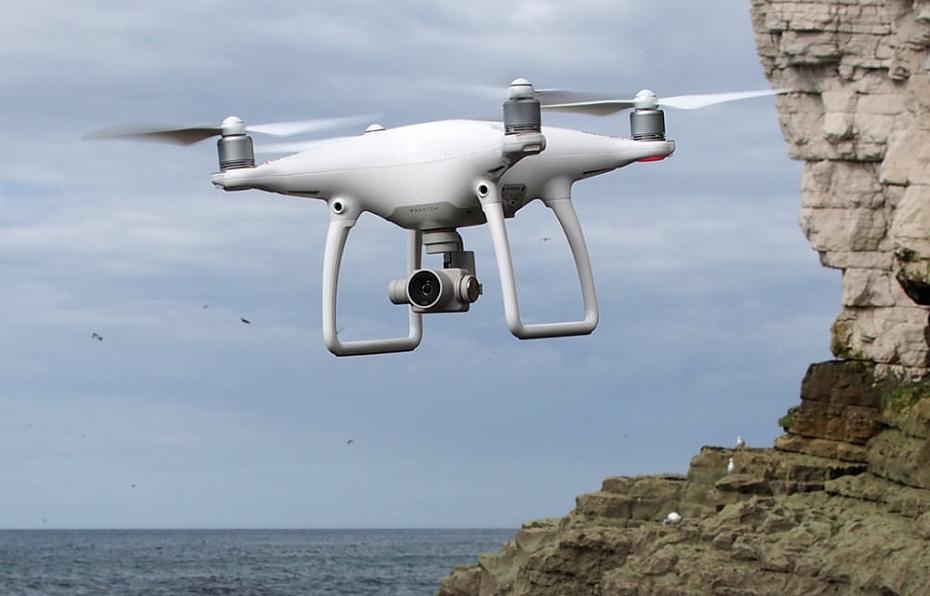
DJI Phantom 4 Performance
The performance section is where we look at the image quality performance of the camera. Additional sample photos and product shots are available in the Equipment Database, where you can add your own review, photos and product ratings.
DJI Phantom 4 Sample Photos
Sample Photos - In scenes with high levels of contrast, such as when the sun is in or near the frame, images can appear over-exposed, and when this occurs you can use the raw (Adobe DNG) images to recover highlight detail. The majority of the time, JPEG images produce good results, although care needs to be taken to avoid any smudges or fingerprints on the lens, as this can lead to a loss of contrast and flare. Colour reproduction is generally quite good, although tended to be cooler rather than warm on default colour options.
The camera tends to keep the ISO speed low, mostly shooting at ISO100 when used outdoors. There is no optical zoom, so if stills photography is your main aim, then you may want to consider a drone with a 16+ megapixel camera, interchangeable lenses, or optical zoom, so that you can alter the focal length, although these tend to cost roughly 3x as much. Alternatively, you just need to fly closer to your subject if you can.
DJI Phantom 4 Lens test images
Lens Performance - With a wide-angle 20mm equivalent lens (in 35mm terms) the lens gives a 94-degree field of view (FOV), which isn't as wide as some drones and action cameras, however, this means that there is less barrel distortion visible compared to wider lenses. The camera also automatically corrects images for distortion and aberrations in-camera, so that JPEG images are corrected straight away, and it was difficult to spot any purple fringing or chromatic aberrations. It was also difficult to spot any problems with lens flare, despite deliberately trying to take photos with the sun in the frame.
Shooting with the HDR mode produces images that look quite artificial, and to get the best results, processing the raw files or editing the JPEG images to your own personal tastes could be necessary. Detail is reasonably good, and images are fairly detailed and quite sharp, particularly in the centre of the frame, but become softer outside of the centre of the frame. Whilst the drone's camera may not compare to a premium compact camera, the results produced are good enough, and the camera and gimbal solution provides a surprisingly stable platform for photography.
Video - There are a wide range of resolutions and frame rates available, as well as options for White Balance (including manual), sharpness, contrast, saturation, plus colour options, including black and white, and D-Log. It's a shame there isn't the option to record HDR video, or choose different compression options, as some may prefer a higher bitrate for higher video quality rather than 60Mbps. You can record in MP4 or MOV file formats, and also choose between PAL and NTSC. The ISO range available for video recording is ISO100 to ISO3200, and there is an anti-flicker setting.
Video resolution and frame rate options include:
- 4K Cine (4096x2160) at 25, 24fps
- 4K UHD (3840x2160) at 30, 25, 24fps
- 2.7K (2704x1520) at 30, 25, 24fps
- FullHD 120, 60, 50, 48, 30, 25, 24fps
- HD 720p at 60, 50, 48, 30, 25, 24fps
There are options for the Gimbal, including FPV (first person view) or Follow, and further advanced settings. You can adjust the gimbal roll, as well as auto calibrate the gimbal.
The camera doesn't record sound (as all it would record would be the noise of the propellers), so you'll need to think about whether you are going to add sound to videos later, either music or alternatively by recording from where you are positioned with another recording device.
Video quality is good and tends to mirror the results we got with still photos, with sharp details in the centre of the frame, becoming softer as you look away from the centre of the frame. The stabilisation provided by the 3-axis gimbal is extremely impressive, producing stable and smooth video footage while you fly the drone in any direction, as well as when the drone is being flown in windy conditions.

Value For Money
The DJI Phantom 4 is available for £1123 which makes it quite good value for money, although there are a number of alternatives available:
Yuneec Q500 4K Full Version - 12mp, 4K video, includes controller with screen, two batteries, aluminium case, 1700g, 25 minutes, £879*
Yuneec Typhoon H - 12mp, 4K video, 360 camera, collision avoidance, includes controller with screen, two batteries, 1950g, 25 minutes, £1399
DJI Phantom 3 Professional - 12mp, 4K video, 1280g, 23 minutes, £949
XIRO Xplorer-V Smart Drone, 14mp, FullHD video, 3-axis gimbal, 995g, 25 minutes, £549
3DR Solo Drone, 1800g (with GoPro and Gimbal), 20 minutes, £978 (including Gimbal, excluding GoPro)
* Camera can also be used separately with included 3-axis gimbal
You'll also need to buy a memory card and a case or bag to keep your drone safe and protected - have a look at our complete guide to camera bags.
DJI Phantom 4 Verdict
In terms of drone photography and video, the DJI Phantom 4 is one of the best available, with a stylish design and magnesium core for strength. As DJI are one of the leading and most popular brands in the consumer drone industry, it makes sense that the 4th version of the Phantom would perform brilliantly. The Phantom 4 offers a long flight time, an excellent 3-axis gimbal for steady video and photography, and gives advanced controls and options, as well as being easy to fly for beginners. Thanks to quick release blades, it is quick and easy to install and remove the blades, so that you can get flying quickly.
There are others on the market that are doing things differently, and it's a shame that there is no optical zoom available, although you can easily fly closer to the subject. The camera system is completely integrated into the drone, it would be good if you had the option to upgrade the camera at a later date or choose a different camera and lens (without having to go up to a much more expensive drone). You also need a smartphone or tablet to control the drone, with some alternatives offering a built-in screen. A spare battery is also a worthwhile investment.
Image quality is generally quite good, with the camera using a low ISO speed most of the time, and the f/2.8 lens is good. Although for stills protographers, you may need to edit raw files to get the most out of images. For most people, this drone will be used for video recording, and here the drone is capable of recording some excellent 4K footage, thanks to the 3-axis gimbal system, which keeps the footage stable regardless of wind and flight conditions.
Depending where you live, it's important to be aware of your local authorities flying guidelines for drones, with the UK CAA providing these guidelines, which restrict you to keeping the drone within sight at all times, and at a maximum height of 400 feet / 120 metres. NoFlyDrones provide an interactive map of no fly zones in the UK, which are worth checking depending on your location. If you are in the US, the FAA provides these guidelines, which are fairly similar to the UK's regulations.
If you want an easy to fly drone, with good photo and video quality and some built-in protection against crashes, then the DJI Phantom 4 is an excellent choice. It's a shame the collision detection doesn't include flying the drone backwards. And if you're unlikely to need some of the features on the Phantom 4, then some of the previous models offer similar features and specifications for quite a noticeable price difference. For those that want an easy to use, fun, drone that's capable of adding an extra edge to photography and video, then the DJI Phantom 4 is definitely recommended.
DJI Phantom 4 Review - Verdict: The DJI Phantom 4 offers an easy-to-use drone with an excellent 3-axis gimbal for steady photos and high-quality video.
